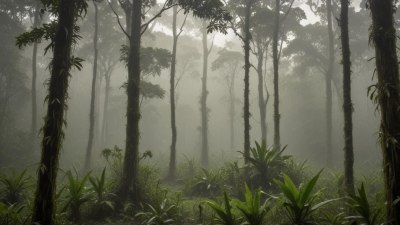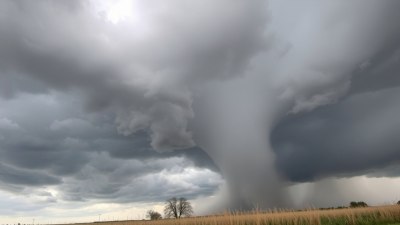The Science Behind Ice Fog
Explore the unique phenomenon of ice fog and its scientific principles. Understand how it forms and its effects on the environment.

This image was created with the assistance of Freepik
Ice fog is a fascinating atmospheric phenomenon that occurs in cold climates, particularly in polar regions and high-altitude areas. Understanding the science behind ice fog requires an exploration of temperature, humidity, and the freezing processes occurring in the atmosphere.
What is Ice Fog?
Ice fog is defined as a suspension of tiny ice crystals in the air, which occurs when the air temperature drops below freezing, typically around -15°C (5°F) or lower. This phenomenon usually appears under conditions of high humidity and stagnant air. Particularly in the winter months, when temperatures plummet, ice fog can create a stunning visual display although it can also pose various hazards.
Formation of Ice Fog
The process of ice fog formation begins when ambient air cools sufficiently to allow water vapor to condense into tiny ice crystals. Under certain conditions, this condensation occurs without the full process of liquid water formation. It happens when the air is saturated with water vapor, which means it can hold no more moisture. In these frigid conditions, even a small amount of additional moisture contributes to the formation of ice fog.
Role of Humidity
Humidity plays a crucial role in the development of ice fog. High humidity ensures that enough water vapor is present to transition directly into ice crystals. When the air temperature dips below the lead point, the air's ability to hold water decreases significantly, prompting water vapor to transition into a solid state, forming delicate ice crystals. This is notably observable in regions with persistent cold temperatures and minimal wind.
Temperature and Ice Fog
Temperature is another critical factor in the presence of ice fog. Typically, temperatures need to be significantly below freezing for ice fog to form. The precise temperature at which ice fog develops can vary based on local atmospheric conditions and the amount of moisture in the air. Generally, the colder it gets, the more likely ice fog will form, given that the air remains saturated with water vapor.
Different Types of Ice Fog
While the most recognized form of ice fog consists of tiny ice crystals, there can be variations based on environmental factors. For instance, when ice fog appears dense and opaque, it may decrease visibility significantly, posing dangers to transportation. In contrast, lighter ice fog may simply create a magical atmosphere, sparkling in sunlight and creating a picturesque landscape.
Geographical Distribution
Ice fog is predominantly found in polar regions and areas of the northern part of North America, Europe, and Asia. The Yukon Territory in Canada and parts of Alaska are particularly known for frequent occurrences of ice fog due to their climatic conditions. The phenomenon is also common in high-altitude environments where temperatures can drop drastically, making ice fog a unique feature of these climates.
Environmental and Climate Impacts
The presence of ice fog can influence various environmental conditions. For instance, ice fog may impact local ecosystems by affecting visibility for both wildlife and human activities. Additionally, it can influence the Earth's radiative balance by reflecting sunlight back into the atmosphere, slightly altering local temperatures and weather patterns.
Ice Fog vs. Other Atmospheric Phenomena
Ice fog is often compared to other types of fog such as regular fog, freezing fog, and hoar frost. Regular fog typically forms when warm, moist air comes in contact with cooler surfaces, leading to condensation. Freezing fog, on the other hand, occurs at temperatures below freezing, with moisture condensing and then freezing upon contact with surfaces, creating a glaze of ice. Understanding these distinctions highlights the unique properties of ice fog.
Safety and Precautions
Due to its potential to reduce visibility, ice fog can create hazardous conditions for transportation, particularly on roads and airports. Drivers and pilots must be especially cautious when navigating through areas where ice fog is known to occur. Organizations often issue warnings to inform the public about ice fog conditions, advising them to take appropriate precautions such as reducing speed and maintaining a safe distance from other vehicles.
In conclusion, ice fog represents a unique interaction between the atmosphere's temperature, humidity, and altitudinal dynamics. Understanding its formation and properties helps shed light on broader climatic phenomena and highlights the complexities of atmospheric science. As climates continue to change, studying such phenomena will be crucial for predicting shifts in weather patterns and their impacts on our environment.











